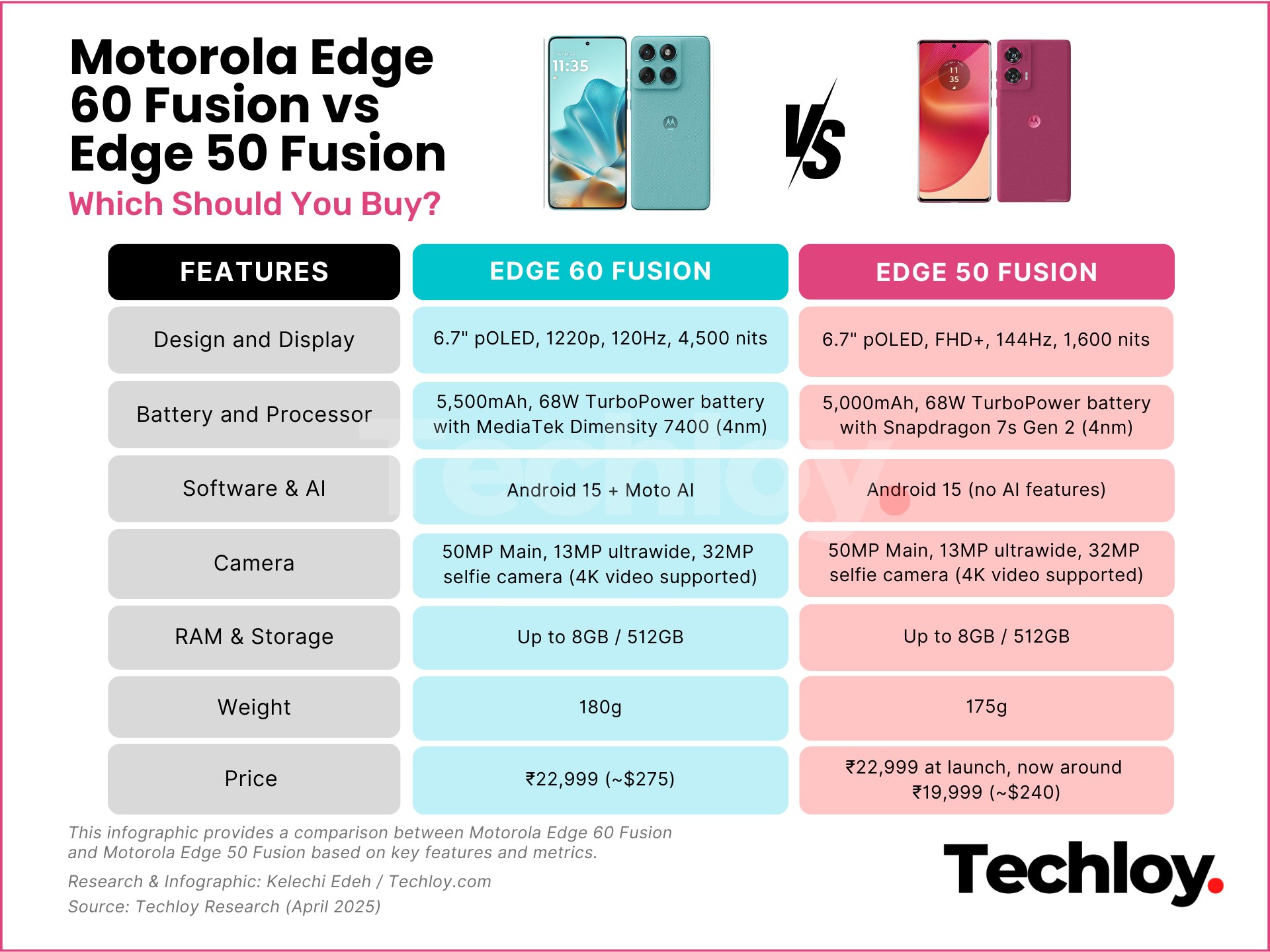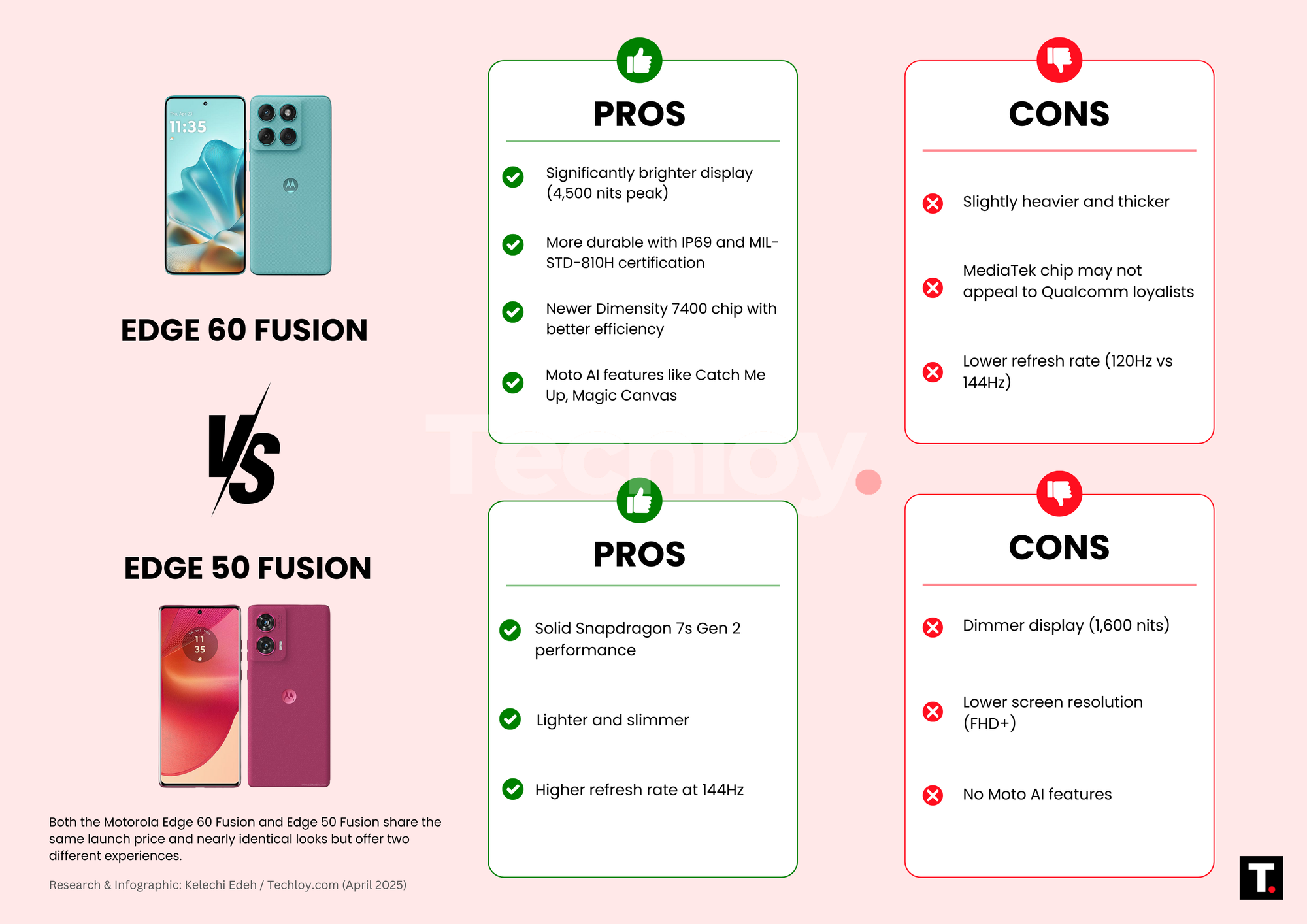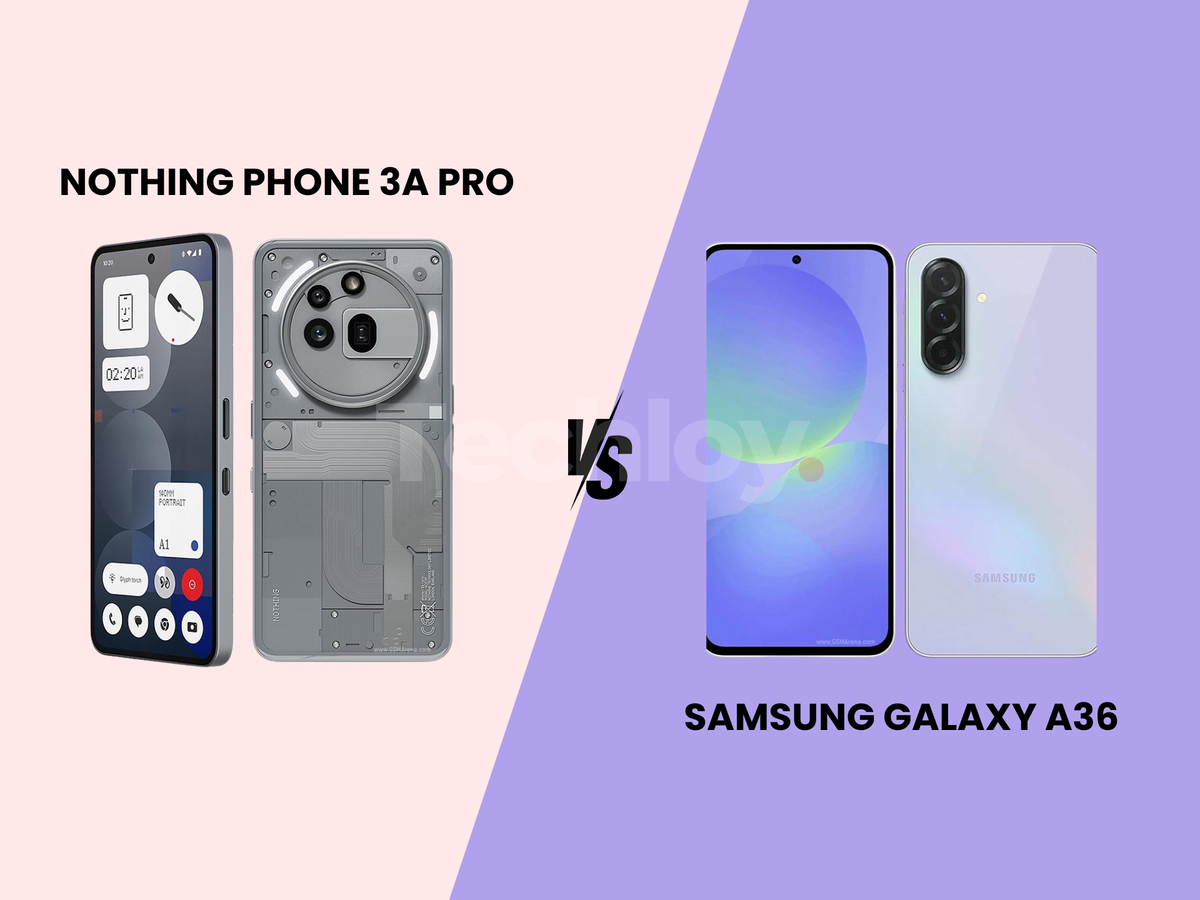Motorola Edge 60 Fusion vs Motorola Edge 50 Fusion: What Are the Differences?
We pit the new Motorola Edge 60 Fusion against last year’s Edge 50 Fusion to see if Motorola’s latest affordable flagship is truly worth the upgrade.

The Edge 50 Fusion was one of Motorola’s best mid-range phones in 2024 — praised for its design, clean software, and solid performance. It even won Best Affordable Phone at the Trusted Reviews Awards. So, with the Edge 60 Fusion arriving at the same launch price and nearly identical looks, it’s fair to ask: what’s actually new here?
Turns out, quite a bit. While the design blueprint hasn’t changed much, the Edge 60 Fusion brings better durability, brighter visuals, AI features, and a newer chip — all aimed at refining an already polished experience.
Let’s break down the differences.
1. Design & Durability
Both phones lean into Motorola’s design language—soft vegan leather backs, quad-curved displays, and Pantone-certified colors. But the Edge 60 Fusion steps things up in the durability department.
While the Edge 50 Fusion already had IP68 water and dust resistance, the 60 Fusion goes further with IP69 and MIL-STD-810H certification—meaning it’s built to withstand harsher conditions like high-pressure water, shock, and extreme temperature. You also get Gorilla Glass 7i instead of Gorilla Glass 5 on the display.
Which wins? Edge 60 Fusion. Same look, stronger body.
2. Display
On paper, both phones come with a 6.7-inch pOLED display—but that’s where the similarities end.
The Edge 60 Fusion offers a higher resolution (1220p) and a jaw-dropping 4,500 nits peak brightness, a massive upgrade over the 1,600 nits on the 50 Fusion. That makes a real difference in bright outdoor conditions. However, the Edge 50 Fusion still has a leg up with a 144Hz refresh rate compared to the newer model’s 120Hz.
In real-world use, you’ll likely notice the increased brightness and clarity more than the slightly slower refresh rate.
Which wins? Edge 60 Fusion—sharper, brighter, and easier on the eyes.
3. Performance
Motorola swapped Qualcomm for MediaTek this time. The Edge 60 Fusion is powered by the Dimensity 7400, while the 50 Fusion runs on the Snapdragon 7s Gen 2.
The Dimensity chip offers slightly better clock speeds and is built on the same 4nm process, so you can expect similar efficiency. Both phones support up to 8GB of RAM and 512GB of storage, but the real-world performance may edge in favor of the 60 Fusion—especially with AI features now baked in.
Which wins? Edge 60 Fusion, thanks to newer silicon and AI smarts.

4. AI Features
This is where Motorola’s newer device starts to separate itself.
The Edge 60 Fusion introduces Moto AI, offering features like Catch Me Up (a daily summary of missed notifications), Pay Attention (live conversation transcription), and Magic Canvas (AI image generation). It’s Motorola’s entry into the AI assistant game—and while still limited compared to Galaxy AI or Apple Intelligence, it adds value.
The 50 Fusion doesn’t get any of these features—at least, not yet.
Which wins? Edge 60 Fusion; smarter out of the box.
5. Camera
Both phones use a 50MP main camera and a 13MP ultrawide, paired with a 32MP selfie shooter capable of 4K video.
But the Edge 60 Fusion brings in the Sony LYTIA 700C sensor, which should deliver better dynamic range, especially in low-light shots. Other than that, the camera experience will feel familiar—solid, but not flagship-level.
Which wins? Edge 60 Fusion, by a sensor upgrade.
6. Battery & Charging
The Edge 60 Fusion squeezes in a slightly larger 5,500mAh battery (vs 5,000mAh on the 50 Fusion), while keeping the same 68W TurboPower fast charging.
Combined with its 120Hz refresh rate (which uses less power than 144Hz), you might actually see better longevity—but not by a huge margin.
Which wins? Edge 60 Fusion, by just enough.
7. Pricing & Value
Both phones launched at ₹22,999 (~$275), but the Edge 50 Fusion is already discounted to as low as ₹19,999 (~$240) at some retailers.
So, if you're on a tight budget, the 50 Fusion is still excellent value—especially since the design and core experience are largely intact. But if you want the latest features and better future-proofing, the 60 Fusion is the smarter pick.
Which wins? Edge 60 Fusion, if you’re buying today. Edge 50 Fusion, if you’re bargain hunting.

Final Verdict: Should You Upgrade?
The Motorola Edge 60 Fusion doesn’t try to reinvent anything. Instead, it refines. You’re getting better durability, a brighter and sharper display, more efficient performance, and a dash of AI—all while keeping the same clean design and price point.
If you already own the Edge 50 Fusion, you’re not missing much. But if you’re choosing between the two now, the Edge 60 Fusion is the clear winner—unless you find a steep discount on the older model.







